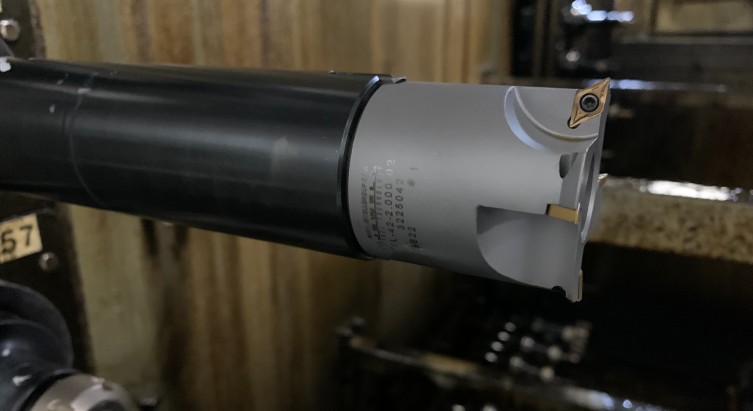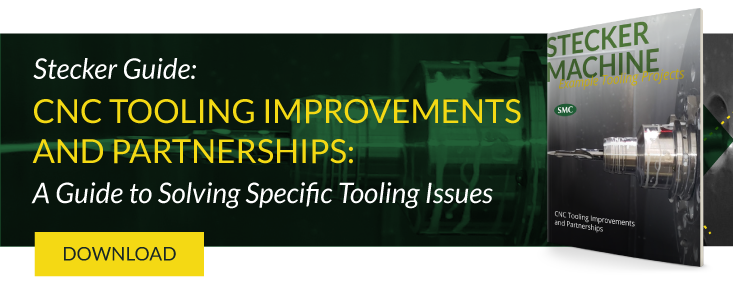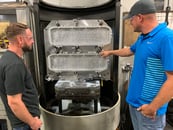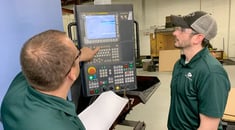The manufacturing world can be tricky. An experienced CNC machine shop may plan a project that seems flawless on paper, taking into account all the subtleties that streamline a process. Yet, when the plan becomes reality, and the process starts flowing, it may fall short of the projected production or profitability targets.
How can value engineering and/or value analysis solve a challenge like this?
Here’s a real-world example from Stecker Machine. A high-end part that required extreme precision — and also speciality tooling — was not hitting cycle time goals. One step in the process involved pressure testing the part after machining; so, taking the part to the assembly and pressure area (and back again after testing).
The value analysis solution here was placing pressure testing equipment within the manufacturing area, allowing the machine operator to test the part within the machine’s cycle. That single adjustment alone brought the process to within goals and target margins.
That’s just one, simple example of value engineering and value analysis. Let’s explore how these tried-and-true processes are used in a CNC machine shop and how they help make life easier for purchasing managers.
Value Engineering and Value Analysis Go Hand-in-Hand
Value engineering is typically done during the plan/design phase, yet continues well down the road, mainly focusing on product value in engineering. Value analysis evaluates existing products, going beyond looking for cycle time efficiencies and explores assembly, cost of components, project flow, etc. The ultimate goals of both are reducing costs and improving functionality.
Value analysis can get quite complex, looking at every step to find cost savings. It also can be simple. A tooling insert change to cut one particular high-volume part saved more than $100,000 per year at Stecker Machine while improving quality.
Value engineering is also an opportunity for the machining supplier to propose design changes to the customer. Perhaps opening up a tolerance or changing a part finish could reduce costs while still maintaining the quality of the part.
Those last four words are the key. The quality of the part should never be compromised.
How to Implement Value Engineering and Value Analysis
For high-end machine shops, process improvements are part of the everyday mindset. It comes naturally to think while you work; meaning, keeping an eye out for ways to simplify a process or update a material or save a step.
Value engineering and value analysis are seamless parts of the larger manufacturing process. It begins with a kickoff and a solid production part approval process (PPAP), including an initial time study. This ensures that engineering design and product specification requirements will be met, including the projected cycle time as compared to the quoted cycle time.
Value engineering begins immediately, with considerations given to tooling, machining, labor, etc. Typically, a major focus is spindle time: how long a part spends being machined. But, value analysis isn’t just about decreasing spindle time or maximizing the machine’s capabilities.
Another way to become more efficient is to look at process flow; how a part moves from step to step. Minimizing steps (even actual physical footsteps an operator may take during the process) and making every second count adds to the ultimate goal: throughput.
Increasing throughput may require adding cycle time in order to reduce operator stress, or provide more time for the operator to debur, audit, or package a part. The absolute best process flow isn’t always obvious when planning a project. It becomes clearer after some production time.
“More Quality Parts in the Basket”
Earlier I stated that, “The quality of the part should never be compromised,” which is true. That doesn’t mean, however, a part needs to be tested and tested and tested. It’s possible to over-test for quality and slow down the process flow.
This is another instance when value analysis removes a repetitive step and improves process efficiency. While increasing throughput and putting “more quality parts in the basket” is the end goal, you also need to trust your quality audits!
Wanting to get the biggest bang for the buck is nothing new. A $5 savings on a tool that runs 1,000 parts/year is nice. But, when that volume is 240,000 parts/year … THAT adds up to serious savings (and tremendous value).
When a Reduction is Requested, How Does a Shop Respond?
Purchasing managers’ job responsibilities heavily lean on finding cost savings, along with managing the process and delivering parts on time. That drive for efficiency, however, shouldn’t overshadow the value of a trusted relationship.
Even within a true partnership, cost reduction requests are normal. For instance, in the automotive world, a 3% reduction in CNC machining is typically asked during the first three years of a part’s production.
It’s understood that processes, set-ups, testing, and tooling are rarely perfect out of the gate, and refinements can result in significant savings. A 30-second reduction in cycle time, for instance, can add up to huge savings during just a year’s time. With a 3-year timeframe, a CNC shop should be able to uncover many efficiencies in a manufacturing process, and realize a 3% savings.
A request may be part of a long-term agreement (LTA), which the CNC machine shop is fully aware of and expecting. That’s another reason why it’s natural for operators and supervisors to be seeking efficiencies. When done right, value analysis and value engineering go beyond sales and engineering and extends to the company culture.
Eventually, there is no additional savings to be gained. People, machines, and tools have limitations, so you can only uncover so much savings. Yet, for the best CNC machine shops, it’s a constant search for ways to realize efficiencies.
Put Stecker’s engineering team to the test (we do!) Contact Stecker or call 920-726-4526. Not ready yet? Read this case study on a recent machining, testing, and quality challenge.







